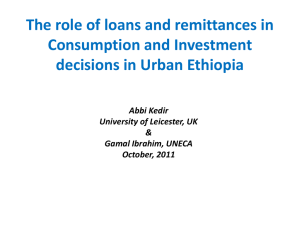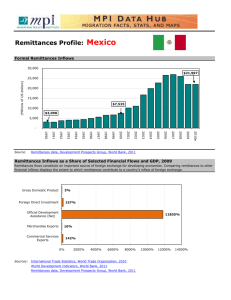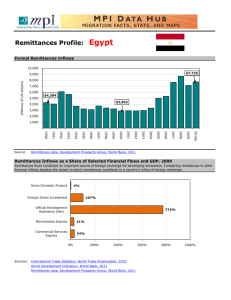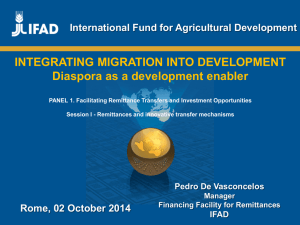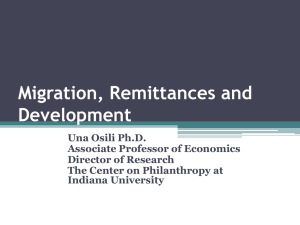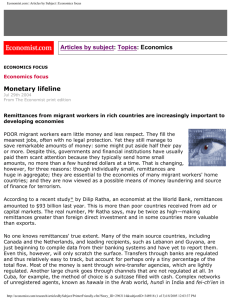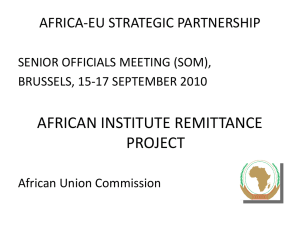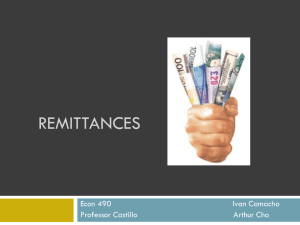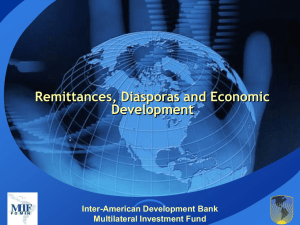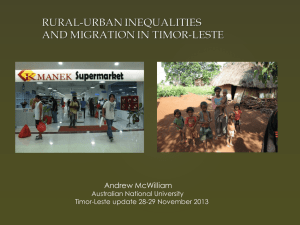Climate Change & UNDP
advertisement
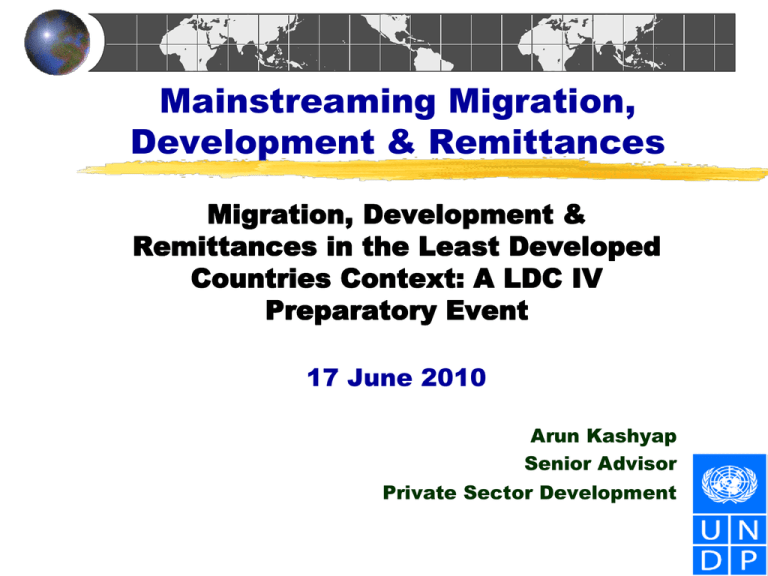
Mainstreaming Migration, Development & Remittances Migration, Development & Remittances in the Least Developed Countries Context: A LDC IV Preparatory Event 17 June 2010 Arun Kashyap Senior Advisor Private Sector Development A Guiding Principle Millennium Development Goals Year of the MDGs – Special review summit International Assessment: What will it take to achieve the MDGs? Support country-led development and foster inclusive economic growth Improving opportunities for women and girls Robust social protection and employment programmes Innovations in improving domestic resource mobilization HDR 2009: Overcoming barriers Human mobility and development Human mobility can be hugely useful in raising a person’s income, health, education prospects (people from poorest places gain the most) Majority of people move within their own country Just over a third (< 70m) people moved from a developing to a developed country Most international migrants moved from one developing country to another or between developed countries Most direct benefits of migration are in the form of remittance sent to immediate family members Even well managed international migration does not amount to a national human development strategy Remittances Facts Remittances are primarily private resources Remittances do not substitute the Developed world’s ODA responsibility Remittances are not a surrogate for government’s development and social protection responsibilities Remittances constitute the second largest capital flow to developing countries Likely to make a strong contribution to FE earnings Informal flows could add at least 50 percent to the official estimate; South-South flows are considerable Impacts at places of origin Remittances represent a way out of poverty for a significant population HH welfare, nutrition, food, health, education Positive impact of remittance on livelihoods, promotion of entrepreneurship and investments Women tend to send a larger proportion of their incomes home Important to explore Diaspora efforts towards improving local economies Remittances facts Being counter cyclical, remittances have offset damage experienced from natural disasters and economic crisis Remittances can offset trade deficits (Bangladesh, Nepal, Philippines) Sovereign ratings in middle income countries and debt sustainability analysis in lowincome countries factor in remittances Remittances-Development Rationale Remittances can create “public goods” as well as other private goods while increasing private welfare Although remittances are mainly used for household consumption Mobile banking/money transfer technologies Remittances spent locally have multiplier effects Impact of remittances on growth depends on level of financial development/ infarstructure Link National Priorities to Local Actions Less than 1 percent of the remittances inflows in 2007 went to low-HDI countries Development impact of remittances is contingent on local institutional structures Develop public policy, partnerships institutions and capacity to consider migration as a part of national planning priority (MDG based NDS) Empower Diaspora, Home Town Associations, local community leaderships; Build confidence, trust and capacity Widening Policy Options Build an inclusive financial system – banking the unbanked Linking remittances, micro finance and provision of safety net mechanisms; Provision of appropriate products, financial education and investment services supported by meso level organizations; Strengthening macro policies to leverage remittances for enhancing national credit ratings and profile Level the playing field for banking and non banking institutions Enabling environment, strengthened institutions, deepening of the financial sector Capacity Development Capacity Development: local governance, and developing and retaining human capital As an intrinsic component of the Integrated Package and including migration and remittances as an intrinsic component of PRSs, UNDAFs Capacity development and provision of business development services for domestic private sector development; Leverage international data standards and strengthen domestic ability to gather gender disaggregated data including engagement of informal sector Knowledge Management Strengthen knowledge networking Develop diagnostics instruments and tool kits for remittances and development; Harness and disseminate lessons learnt and good practices; State of the art assessment frameworks and methodologies Partner the World Bank Group to validate General Principles for International Remittance Services at national levels South-South Cooperation A number of UNDP country offices are assessing innovative solutions for remittances based development Tajikistan, Somalia, Albania, El Salvador, Philippines, etc. Important need to exchange lessons and good practices from countries that have successfully retained human capital Establishment of a GMG Working Group Mainstreaming migration in national development strategies Holistic approach with engagement of UNCT to link migration and enhanced human development outcomes Enhanced interagency collaboration and alignment of development partners and donor agencies Coordinate country level support for the preparation and organization of GFMD meetings
